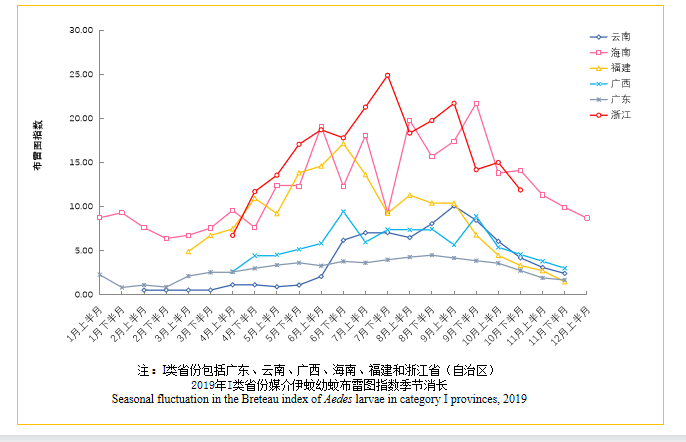Dengue Fever Surveillance and Control Special
TANG Ye-rong, JIANG Jin-yong, DU Long-fei, YANG Ming-dong, FAN Jian-hua, ZHU Jin, ZOU Jian-hong, HE Jing, YU Zhang, ZHOU Hong-ning
Objective To investigate the application effect of gridding management in the prevention and control of dengue fever in Jinghong, Yunnan province, China, and to provide a scientific basis for developing effective prevention and control strategies for dengue fever. Methods Based on the gridding management system of dengue fever prevention and control in Jinghong in 2019, epidemiological description and the geographic information system were used to analyze and evaluate the effectiveness of gridding management in the prevention and control of dengue fever in Jinghong in 2019. Results In 2019, 28 dengue fever grid points were divided in the urban area of Jinghong city. Imported cases occurred in June, the outbreak of dengue fever was observed in July, and the cases of dengue fever reached the peak in September (1 775 cases). For the 28 grid points in Jinghong from June to November, the monthly mean Breteau index (BI) was 11.18, 18.42, 14.62, 14.02, 5.81, and 2.09, respectively, the rate of reaching the standard of BI was 52.56%, 44.76%, 51.66%, 46.57%, 74.01%, and 91.71%, respectively, and the number of dengue cases were 8, 47, 540, 1 775, 473, and 72, respectively. Conclusion Gridding management can effectively prevent and control dengue fever by improving the rate of reaching the standard of BI in the urban area of Jinghong. It is suggested that the local government should further develop the grid management of dengue fever.

